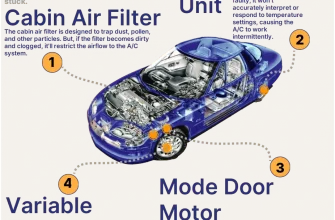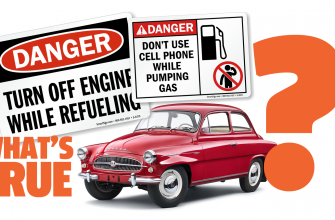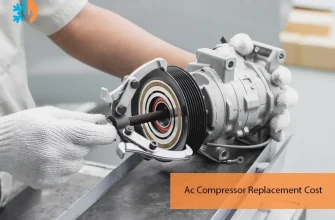Driving is an essential part of many people’s daily lives‚ and keeping your vehicle in top condition is crucial for both safety and performance․ One of the most important indicators on your dashboard is the transmission light․ If this light illuminates‚ it’s essential to understand what it means and how to respond․ In this article‚ we will explore the significance of the transmission light‚ the reasons it may turn on‚ and the necessary actions you should take to address the issue․
- What Does the Transmission Light Indicate?
- Common Reasons for the Transmission Light to Illuminate
- What Should You Do When the Transmission Light Comes On?
- Preventive Measures
- Decoding the Transmission Light: Key Insights
- Understanding the Diagnostic Codes
- Symptoms to Watch For
- Immediate Actions to Take
- Long-Term Maintenance Strategies
What Does the Transmission Light Indicate?
The transmission light‚ often depicted as a gear icon or the words “Check Transmission‚” serves as a warning that something is amiss with your vehicle’s transmission system․ The transmission is responsible for transferring power from the engine to the wheels‚ allowing your car to shift gears smoothly․ When this light comes on‚ it could indicate a range of problems‚ from minor issues to serious malfunctions․
Common Reasons for the Transmission Light to Illuminate
- Low Transmission Fluid: One of the most common causes of a transmission light activation is low fluid levels․ Transmission fluid lubricates the various components‚ and insufficient fluid can lead to overheating and damage․
- Transmission Overheating: If the transmission overheats‚ it can cause the light to come on․ This may result from low fluid levels‚ a faulty cooler‚ or excessive strain on the transmission․
- Faulty Sensors: Modern vehicles are equipped with sensors that monitor various components of the transmission․ A malfunctioning sensor can trigger the transmission light‚ even if there’s no actual issue with the transmission itself․
- Transmission Slippage: If you notice that your car hesitates or struggles to shift gears‚ it may indicate slippage‚ which can lead to further complications if not addressed promptly․
- Mechanical Failures: More serious problems‚ such as worn gears or internal transmission damage‚ can also activate the transmission light․ These issues require immediate attention from a professional mechanic․
What Should You Do When the Transmission Light Comes On?
When the transmission light illuminates‚ it’s essential to take the situation seriously․ Here’s what you should do:
- Check Transmission Fluid Levels: Start by checking the transmission fluid․ Consult your owner’s manual for the correct procedure․ If levels are low‚ topping up may solve the issue․
- Observe Vehicle Behavior: Pay attention to how your car is performing․ Are there any unusual noises‚ slipping‚ or difficulty shifting? Take note of these symptoms‚ as they can provide valuable information for your mechanic․
- Avoid Driving: If the light comes on and you notice any concerning symptoms‚ it’s best to avoid driving the vehicle․ Continuing to drive can exacerbate the problem and lead to more significant damage․
- Consult a Professional: If topping up the fluid doesn’t resolve the issue‚ or if the light remains on‚ take your vehicle to a trusted mechanic․ They will perform a diagnostic check to identify the root cause of the problem․
Preventive Measures
To avoid future issues with your transmission‚ consider the following preventive measures:
- Regular Fluid Checks: Make it a habit to check your transmission fluid levels regularly‚ especially before long trips․
- Scheduled Maintenance: Adhere to your vehicle’s maintenance schedule‚ including transmission fluid changes‚ which can help prolong the life of your transmission․
- Drive Responsibly: Avoid aggressive driving habits‚ which can put excessive strain on your vehicle’s transmission․
The transmission light is a critical indicator of your vehicle’s health․ Ignoring it can lead to costly repairs and dangerous driving conditions․ By understanding the potential reasons behind the light and knowing how to respond‚ you can take proactive steps to ensure your vehicle remains in optimal condition․ Remember‚ when in doubt‚ it’s always best to consult a professional mechanic who can provide expert guidance and care for your vehicle․
In the world of automotive care‚ understanding the warning lights on your dashboard can save you from costly repairs and ensure your safety on the road․ The transmission light is one of the more critical indicators‚ and its appearance can evoke a sense of urgency for drivers․ But what happens when you see that ominous glow? Here’s a deeper dive into the intricacies of the transmission light‚ its implications‚ and the proactive steps you can take to keep your vehicle running smoothly․
Decoding the Transmission Light: Key Insights
The transmission light doesn’t just signal an issue; it often speaks in the language of your vehicle’s overall health․ When illuminated‚ this light may indicate that your car’s onboard computer has detected a fault in the transmission system‚ which could stem from various sources․ Let’s explore these further to equip you with knowledge that might come in handy during your next visit to the mechanic․
Understanding the Diagnostic Codes
Modern vehicles come with onboard diagnostics that can provide a wealth of information․ When the transmission light activates‚ it often generates a trouble code that can be read using a diagnostic scanner․ This code will help mechanics pinpoint the issue more accurately‚ whether it’s a simple low fluid level or a more complicated internal problem․ Don’t hesitate to request this diagnostic check; it’s a vital tool in understanding what your vehicle is trying to communicate․
Symptoms to Watch For
In addition to the light itself‚ being aware of other symptoms is crucial․ If you experience any of the following‚ it’s time to take action:
- Unusual Noises: Grinding‚ whining‚ or clunking sounds may indicate mechanical issues․
- Delayed Engagement: If your car hesitates before shifting into gear‚ it could point to a transmission problem․
- Fluid Leaks: Puddles of reddish fluid beneath your vehicle can signify a leak‚ which should be addressed immediately․
- Warning Messages: Some vehicles may display additional messages or codes on the dashboard‚ offering further clarification․
Immediate Actions to Take
Should the transmission light illuminate while driving‚ here’s a quick guide on the immediate steps to take:
- Find a Safe Location: If you’re on the road‚ find a safe place to pull over as soon as possible․
- Turn Off the Engine: This allows the transmission to cool down and prevents further damage;
- Check for Leaks: Inspect the ground beneath your vehicle for any signs of fluid leaks․
- Consult Your Manual: Your owner’s manual may provide specific guidance tailored to your vehicle model․
Long-Term Maintenance Strategies
Prevention is always better than cure․ To ensure your transmission remains in good health‚ consider implementing these long-term maintenance strategies:
- Regular Fluid Changes: Changing your transmission fluid according to your manufacturer’s recommendations can significantly extend the life of your transmission․
- Monitor Fluid Levels: Regular checks can catch low fluid levels before they become a problem․
- Stay Informed: Keep up with recalls or service advisories for your specific vehicle model‚ as manufacturers often release important information that can prevent issues․
Understanding what the transmission light means and what steps to take when it illuminates empowers you as a driver․ By remaining vigilant and proactive‚ you can address issues before they escalate‚ ensuring not just the longevity of your vehicle‚ but also your safety on the road․ Remember‚ your car is a complex machine‚ and recognizing its signals will make you a more responsible and informed driver․ Stay alert‚ stay informed‚ and drive safely!









This article provides a clear understanding of the transmission light. Very informative and well-written!
I had no idea what the transmission light meant until I read this. Great job explaining it!
Fantastic information on the importance of the transmission light! I feel more confident about my car maintenance now.
I appreciate how you highlighted both minor and serious issues related to the transmission light. Very insightful!
The breakdown of common reasons for the transmission light to turn on is super helpful. Thanks for sharing!
This article is a must-read for every car owner. Understanding these signals can save us from costly repairs!
Excellent article! It’s crucial for drivers to know about their vehicle